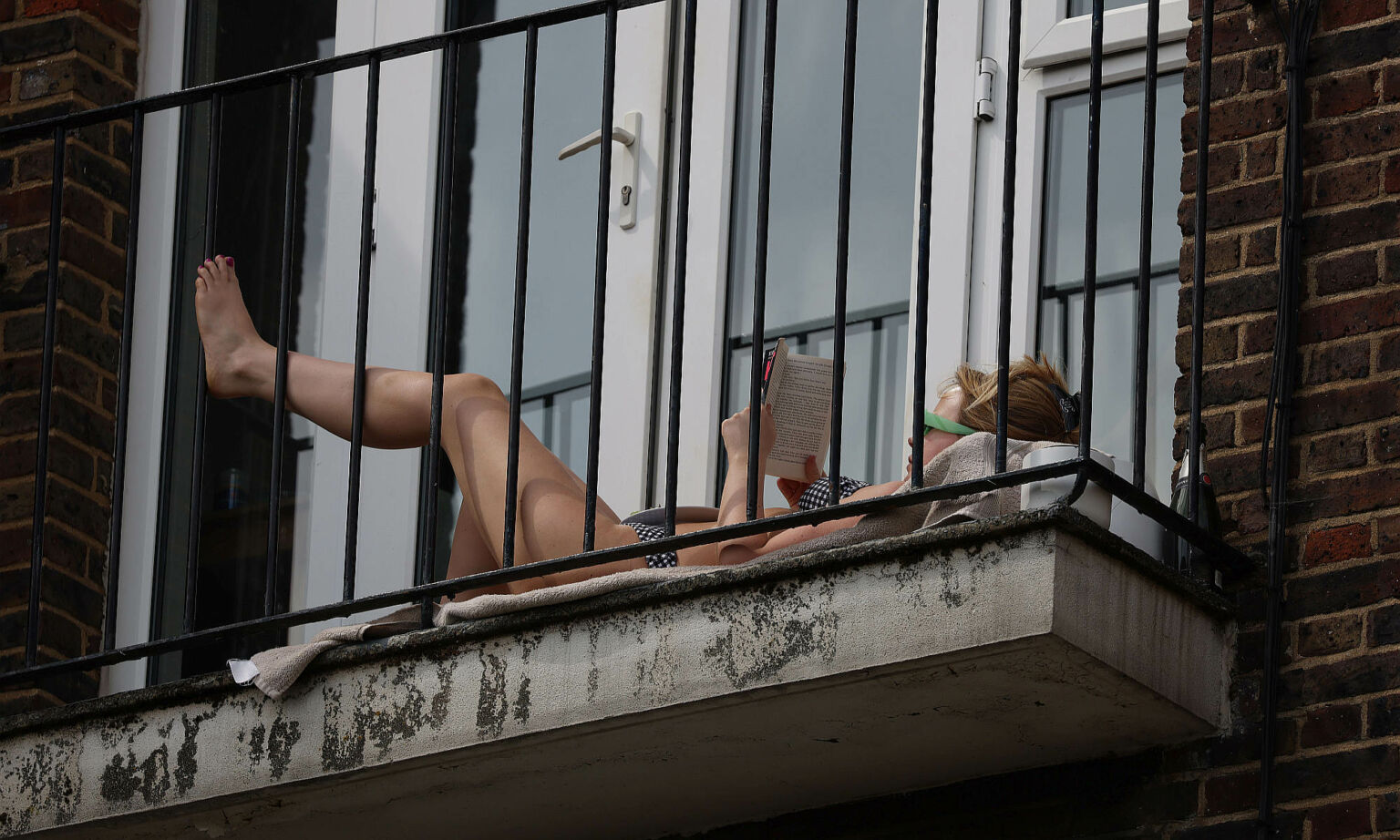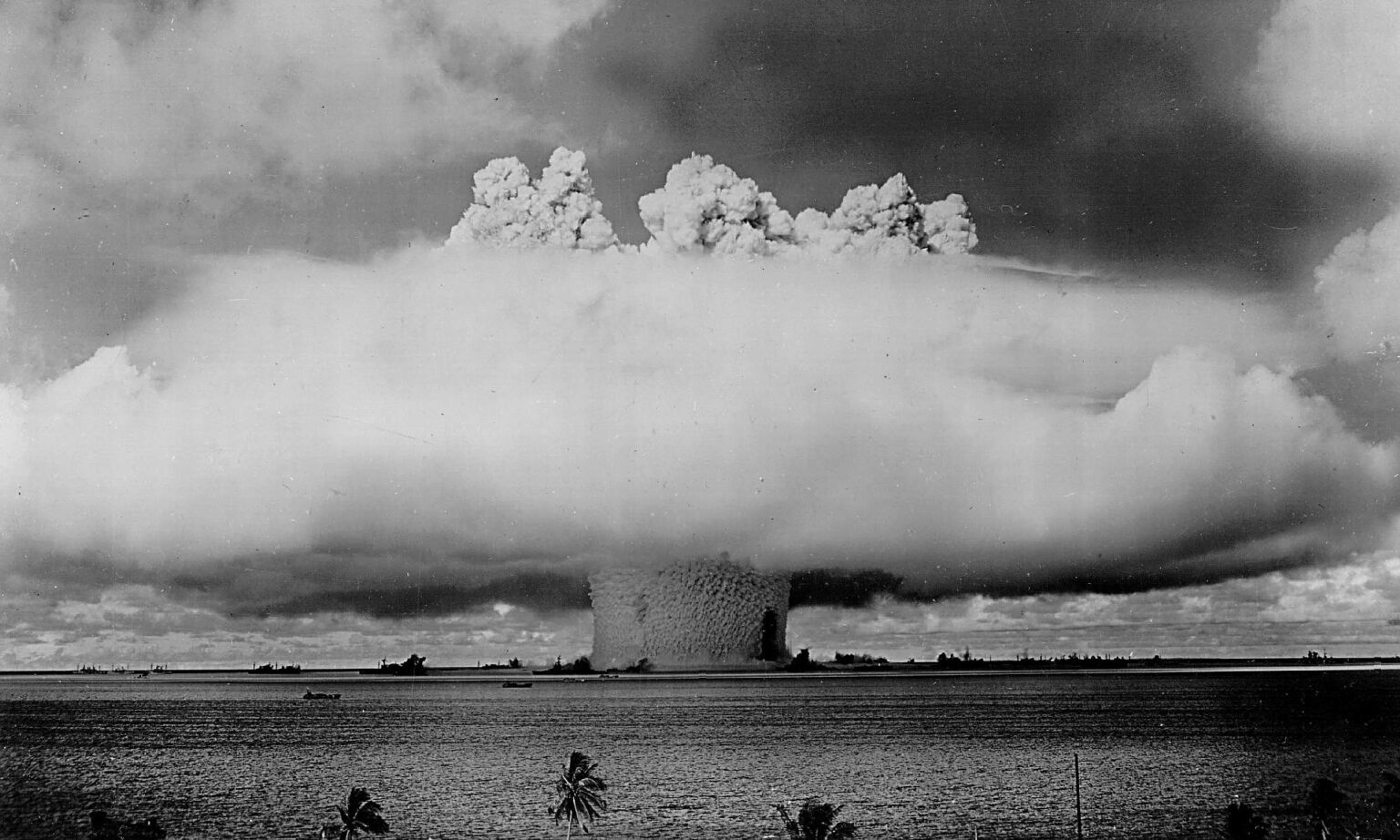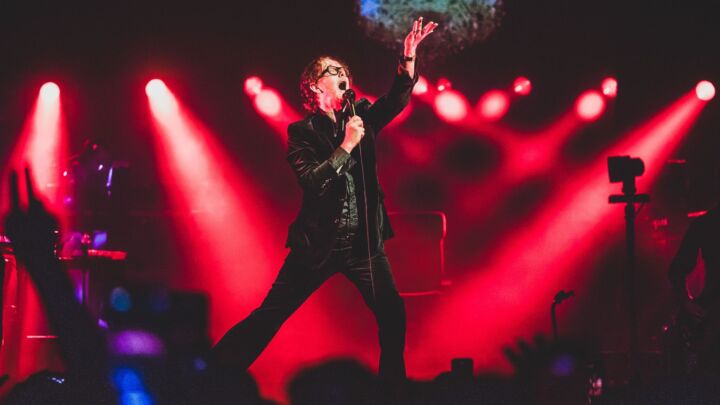
Long-read
Apocalypse from now on?
How the climate of fear turned a heatwave into a catastrophe.
Want to read spiked ad-free? Become a spiked supporter.
‘Hellfire’, said the Sun on its Wednesday morning frontpage, alongside a close-up image of burning houses. The Daily Mirror was no less dramatic. ‘Britain’s burning’, it announced, again showing that same blaze destroying people’s homes. Likewise, the Guardian accompanied a near identical image with the admonishment: ‘A wake-up call.’
A fire that broke out on a street in Wennington, a village on the outskirts of east London, became the visual focus of every newspaper. It was the defining image of this week’s heatwave. It was dramatic. And for those affected, it was tragic.
Thankfully, no one died in the Wennington fires and no civilians were injured. So why did they get the frontpage treatment? Why did they become so central to the media narrative of the heatwave? It is as if the fires offered the best means to present the heatwave as a disaster. After all, the media had portrayed the heatwave as such before the event – as did all those government bodies which classified the heatwave as a ‘national emergency’. More importantly, they wanted, almost unconsciously, to turn the heatwave into something other than it was – into a ‘warning sign’ of the catastrophe to come, a portent of the apocalypse, a terrifying, hellish glimpse into the future.
As with every other ‘extreme’ weather event today, our political and media class were determined to present this week’s heatwave as part of our unfolding climate ‘catastrophe’. They wanted to turn it into yet another episode in the dominant metanarrative of our era. ‘Living through what we’re living through’, wrote one columnist of our scorched descent, ‘seeing it take hold, and not knowing where it will end, isn’t just terrifying, it’s unbearable…’. Others struck the same terrified note. ‘This is just the beginning’, said Bill McGuire, a University College London professor of geophysical and climate hazards, in the Guardian. ‘When our children are our age, they will yearn for a summer as “cool” as 2022.’
The heatwave seemed to merely confirm what many among our cultural elites already knew – that things are always, inexorably getting worse as we hurtle towards our sun-burnt doom.
The myth of the climate crisis
Except that things are not inexorably getting worse. Not by any objective standards. And that is telling. It shows us that the catastrophism that is gripping parts of society is not driven by an actual, observable uptick in disaster. It is driven by something else – by a broader, doomladen cultural sensibility.

Take the rising temperatures in Britain over the past two decades, which culminated in a record 40 degree Celsius at Coningsby in Lincolnshire. It is undoubtedly true that all of the UK’s 10 warmest years on record have happened in the past 20 years. But what is striking is that during this period there has been no accompanying increase in the kind of fires we saw in Wennington – even in Greater London, which is the hottest, most populous area in the UK.
Quite the opposite. As the Spectator notes, between 1966 and 2008 there were more than 30,000 fires in Greater London, peaking in 1976 when there were nearly 64,000 fires. Since 2008, the number of fires recorded in London has fallen dramatically, with just 15,000 in 2021.
Even grass fires, which one would expect to be on the rise given the hotter, drier climate of the past two decades, have actually been in decline in Greater London. As the London Fire Brigade puts it, the number of grass fires in Greater London is ‘significantly lower [today] than a decade ago’. Indeed, grass fires peaked in 2003 and have fallen 83 per cent since then. Which is hardly a sign that we are heading towards a future of annual wildfires and burnt-out houses.
There are good reasons for the fall in the number of fires in Greater London. Chimneys and chip pans, which were the source of many conflagrations, are not used to anything like the same extent today. And the rise in use of smoke alarms and sprinklers will also have reduced the risk of fire.
What all this tells us is that the dreadful fires that consumed several houses in Wennington and other properties elsewhere in the UK were not part of an unmanageable, upwards trend. And they certainly were not evidence of the unfolding climate catastrophe. Quite the opposite. They bucked the trend. They were horrible but largely exceptional events.
This contrast between the catastrophising of our cultural and political elites and a rather more mundane reality is borne out globally. We hear constantly about ‘extreme’ weather events. We hear endless talk of the rise in natural disasters caused by manmade climate change. Our house is on fire, says Greta Thunberg relentlessly. It certainly feels as if the world has entered a period of ever-more dangerous natural instability.
Yet the statistics tell a very different story. As Michael Shellenberger noted in his 2020 book Apocalypse Never, there has been ‘a 92 per cent decline in the decadal death toll from natural disasters since its peak in the 1920s’. Back then, 5.4million people died from natural disasters. In the 2010s, just 400,000 did.
Few doubt that global temperatures are on the rise. But that is not creating a dangerous, more threatening world. Why? Because human societies, thanks to economic growth and material development, are far more resilient than they used to be. For example, heatwaves in the US have increased in intensity and frequency since the 1960s – although they still pale in comparison to the heatwaves of the 1930s. But, as Roger Pielke Jr, a political scientist, has observed, societal vulnerability has decreased over the same period. The mortality risk in ‘extreme heat events’ has declined at the same time as ‘extreme heat events’ have increased in frequency.
This should be a cause for optimism. As a major study in the journal Global Environmental Change showed in 2019, global death rates and economic damage caused by extreme weather events dropped by 80 to 90 per cent during the past four decades.
We have never been less vulnerable or better able to cope with the vicissitudes of the climate. And yet it feels as if the opposite is true. And that tells us that what is driving the catastrophism is grounded less in material reality than it is in our fearful political and cultural imagination.
This shared imagination, dominating media, culture and most public institutions in the West, is shaping how we see and experience the world around us. It seizes upon unusual weather events, inserts them into a narrative of doom, and gives them meaning in terms of the catastrophe towards which they are supposedly pointing. The weather is never just the weather. Floods are never just floods. Heatwaves are never just heatwaves. They are simultaneously signs of the disaster prophesied by The Science.
Apocalypse from now on
In 1989, Susan Sontag published AIDS and its Metaphors, a companion piece to her 1978 classic, Illness as Metaphor. It was mainly a reflection on the moral and social meanings, many of them judgemental and punitive, foisted on to the AIDS pandemic during the 1980s. But she also provided an invaluable reflection on the expansion of the apocalyptic imagination since the end of the Second World War.
Western society, she argued, seemed to be permanently anticipating a world-ending disaster. Public discourse was dominated by the sense that this or that danger or problem was leading or pointing towards what she called ‘all-out catastrophe’. Oceans, lakes and forests were supposedly dying, population was reported to be growing to unsustainable levels, and the ozone layer was punctured and depleted. Add to that the inescapable shadow of nuclear annihilation, either at the hands of warring superpowers or another Chernobyl-style meltdown, and it was difficult to avoid the sense that the end was forever nigh. Or as she put it, it was ‘apocalypse from now on’.

Environmentalism and the narrative of climate change have their modern origins in that increasingly apocalyptic postwar mood that Sontag drew attention to nearly four decades ago.
Rachel Carson’s Silent Spring, a doomladen take on the deleterious impact of pesticides widely cited as a cornerstone of modern environmentalism, was published in 1962. The following year, one of the first groups of scientists to associate manmade global warming with significant ‘danger’ held a conference in New York. The group, known as the Conservation Foundation of New York, warned of a ‘potentially dangerous atmospheric increase of carbon dioxide’.
Climate change had long been a subject of scientific interest, of course. But for much of the 19th and early 20th century it was rarely cast as an existential threat. In 1906, for instance, the Swedish scientist Svante Arrhenius reckoned global warming would allow future populations ‘to enjoy ages with more equable and better climates, especially as regards the colder regions of the Earth’.
But in the darker postwar moment, climate change started to acquire a menacing aspect. And not just in the eyes of those, like the Conservation Foundation, who were warning of global warming, but in the eyes of those warning of catastrophic global cooling, too. In 1979, the UK-based Sunday Telegraph even asked, ‘Are we heading for an ice age?’.
By the 1980s, however, the global-warming catastrophists were winning out over the New Ice Agers. NASA scientist Jim Hansen’s testimony to the US Senate in 1988, in which he warned of the future threat of global warming, effectively cemented their triumph over the global coolers.
Sontag’s analysis of the apocalyptic imagination, which she witnessed emerge during her own lifetime, is as invaluable now as it was then. She didn’t dismiss or ‘deny’ the facts from which the apocalyptic visions drew their dark inspiration. AIDS really was a terrible disease. Heavy industry really could cause instances of environmental degradation. And no doubt the climate could be warming.
What she critiqued was the apocalyptic extrapolation. This means that any challenge or problem we face, when refracted through the apocalyptic imagination, is presented in terms of the catastrophe to come. Every scientifically observable change in nature is, via ever more sophisticated modelling, transformed into a future end-of-days event. This is less a scientific procedure than a creative, metaphorical one, transforming one thing into something else. As she put it: ‘Every process is a prospect, and invites a prediction bolstered by statistics. Say: the number now… in three years, in five years, in 10 years; and, of course, at the end of the century. Anything in history or nature that can be described as changing steadily can be seen as heading toward catastrophe.’
The present, she argued, is effectively haunted by the future. Not the prosperous future conjured up by the Victorian bourgeoisie, their belief in progress firm. But the catastrophic future conjured up by the disillusioned bourgeoisie of the 20th and now 21st century, their cultural pessimism deepening. And so the development of nuclear power is seen in the light of a future meltdown. A decline in numbers of a certain wild animal is seen in the light of a species extinction. And, as we’ve seen this week, a heatwave is seen in the light of a scorched, uninhabitable country.
Fear of the future
‘The taste for worst-case scenarios reflects the need to master fear of what is felt to be uncontrollable’, wrote Sontag. Indeed, the growth of the apocalyptic imagination rests, ultimately, on a fear of the future. Or, to be more precise, a fear of the risks and possibilities – in short, the uncertainty – inherent in the idea of the future.
Western society was not always beset by such anxiety. For much of the modern era, the ideals of the Enlightenment – universalism, the promise of science and rationality, democracy and progress – sustained a relatively confident attitude towards the challenges and crises a society might face. These ideals, which were already being undermined by the end of the 19th century, came under serious assault after the First World War. By the late 1940s, in the shadow of a catastrophic, morally ruinous conflict and the failure of laissez-faire liberal capitalism, any residual cultural confidence among Western elites in reason, universalism and progress had ebbed away.
Western societies were becoming richer after the war, of course. But they were also increasingly lacking both moral and cultural belief in themselves – because they had no coherent story to tell themselves. They could not really take their lead from a past that was increasingly looking like a foreign country, and a not very pleasant one at that. And as a result, they were struggling to orient themselves in the present, posturing against the USSR aside. This was why the future itself was starting to loom up before them as a source of myriad potential threats, from pandemics and nuclear wars to ecological collapse.
This moment is the birthplace of the modern apocalyptic imagination. As Sontag rightly pointed out, the proliferation of worst-case thinking during the postwar era was, as it still is, informed by a desire to ‘master’ this fear of uncertainty. Seeing a catastrophic future contained in even the most mundane present event, and shrilly calling for action, has effectively become a way of holding off the future. It reflects a desire to arrest the present in the name of averting the catastrophe. Think of today’s eco-activists, such as Extinction Rebellion and its offshoot, Just Stop Oil – their very names capture both the apocalypse to be averted (‘extinction’) and the desire to hold the future at bay (‘just stop’).
In the end, that approach only makes things worse. The apocalyptic imagination fosters further fear and anxiety among certain parts of society and generates impossible demands to stop everything now. It is paralysing, it encourages fatalism and it obscures the very mundane, practical things we can do to adapt to a changing climate.
Sontag, writing of AIDS, said that ‘it is highly desirable for a specific dreaded illness to come to seem ordinary’. In other words, it is good that a disease is divested of metaphorical, apocalyptic meaning, and that it ceases to be seen, for instance, as a punishment from God. That way it is easier to treat without stigma or undue fear. The same goes for ‘extreme’ weather events, including heatwaves. We need to bring them down to earth and demystify them. That means treating aspects of climate change not as signs of the catastrophic future awaiting us just a few years down the line, but as challenges which we can and will overcome.
Think of anti-pollution measures introduced in Western societies over the past couple of centuries. Excessive smoke and smog wasn’t in the past treated as a symbol for something else – as a warning sign or punishment or the occasion for a Just Stop Burning Things protest. It was simply treated as a practical problem to be solved. Which it was.
So it is with a potentially warmer climate. Whatever problems it throws up, there is a sober, resilient approach we can take. This is no easy task, of course. It requires us, as societies, to re-orient ourselves in relation to the future, and also in relation to the past. It requires recovering and revitalising the Enlightenment ideals we have repudiated, too often in the name of environmentalism. Only by re-embracing reason, science and progress will we have the wherewithal to face the uncertainty of the future with a degree of confidence. Perhaps then we can finally stop catastrophising about climate change and start treating it as a challenge we can overcome.
Tim Black is a spiked columnist.
Pictures by: Getty.
Who funds spiked? You do
We are funded by you. And in this era of cancel culture and advertiser boycotts, we rely on your donations more than ever. Seventy per cent of our revenue comes from our readers’ donations – the vast majority giving just £5 per month. If you make a regular donation – of £5 a month or £50 a year – you can become a and enjoy:
–Ad-free reading
–Exclusive events
–Access to our comments section
It’s the best way to keep spiked going – and growing. Thank you!







Comments
Want to join the conversation?
Only spiked supporters and patrons, who donate regularly to us, can comment on our articles.